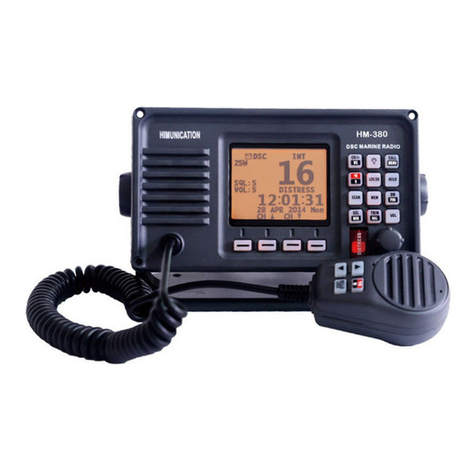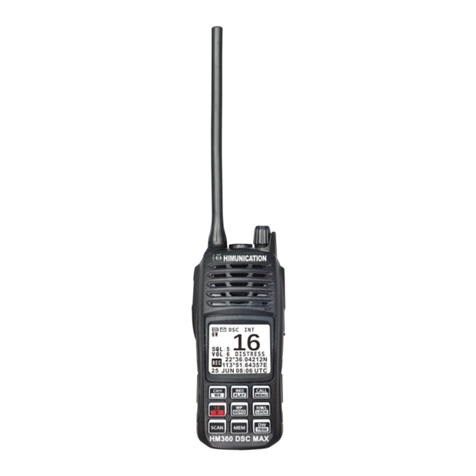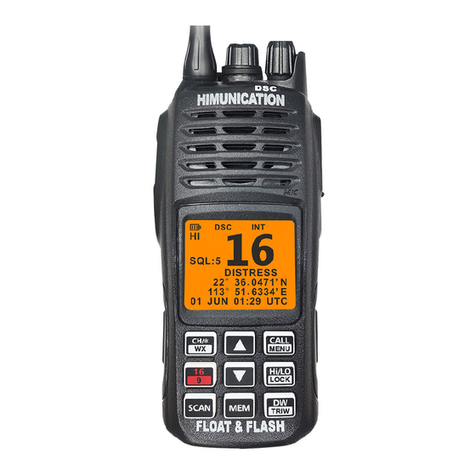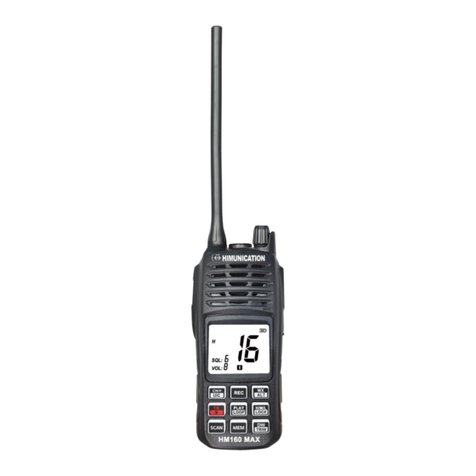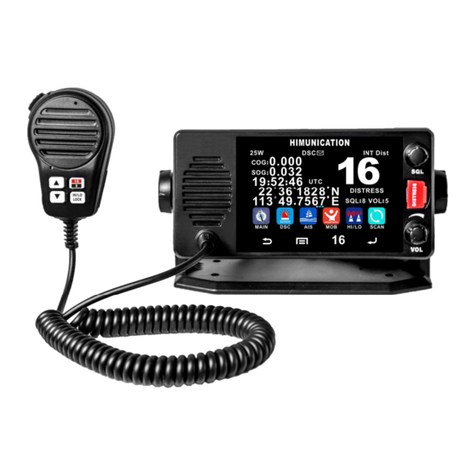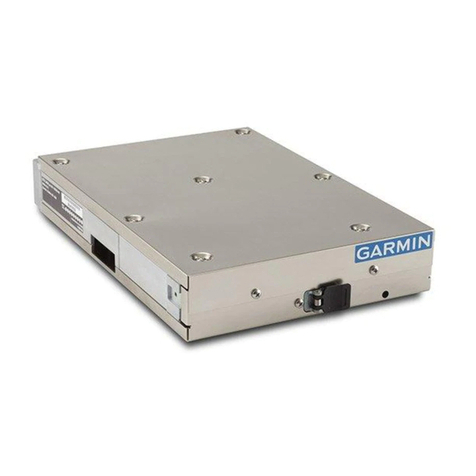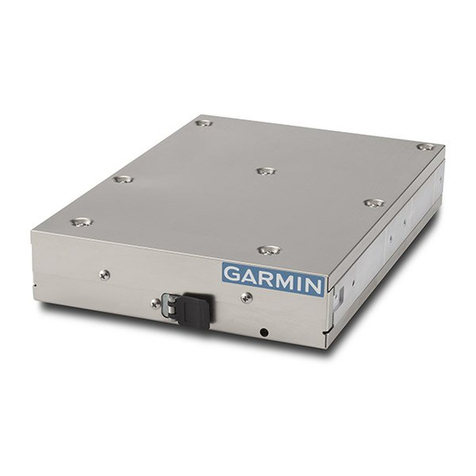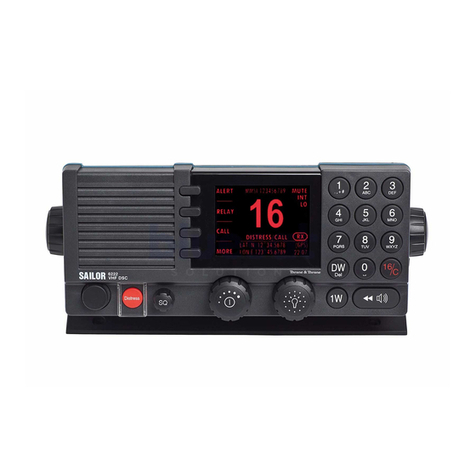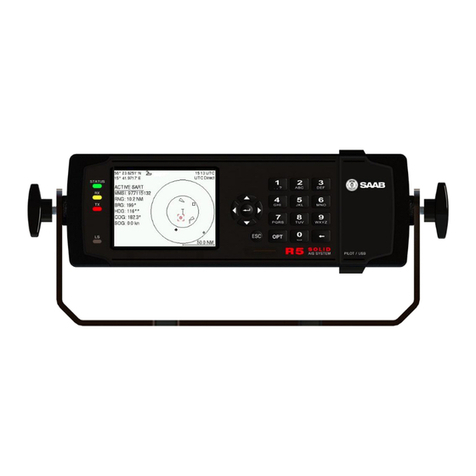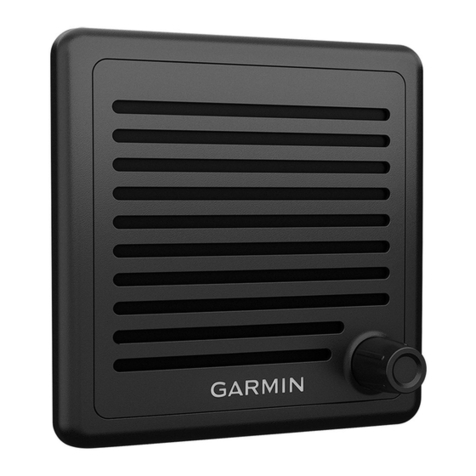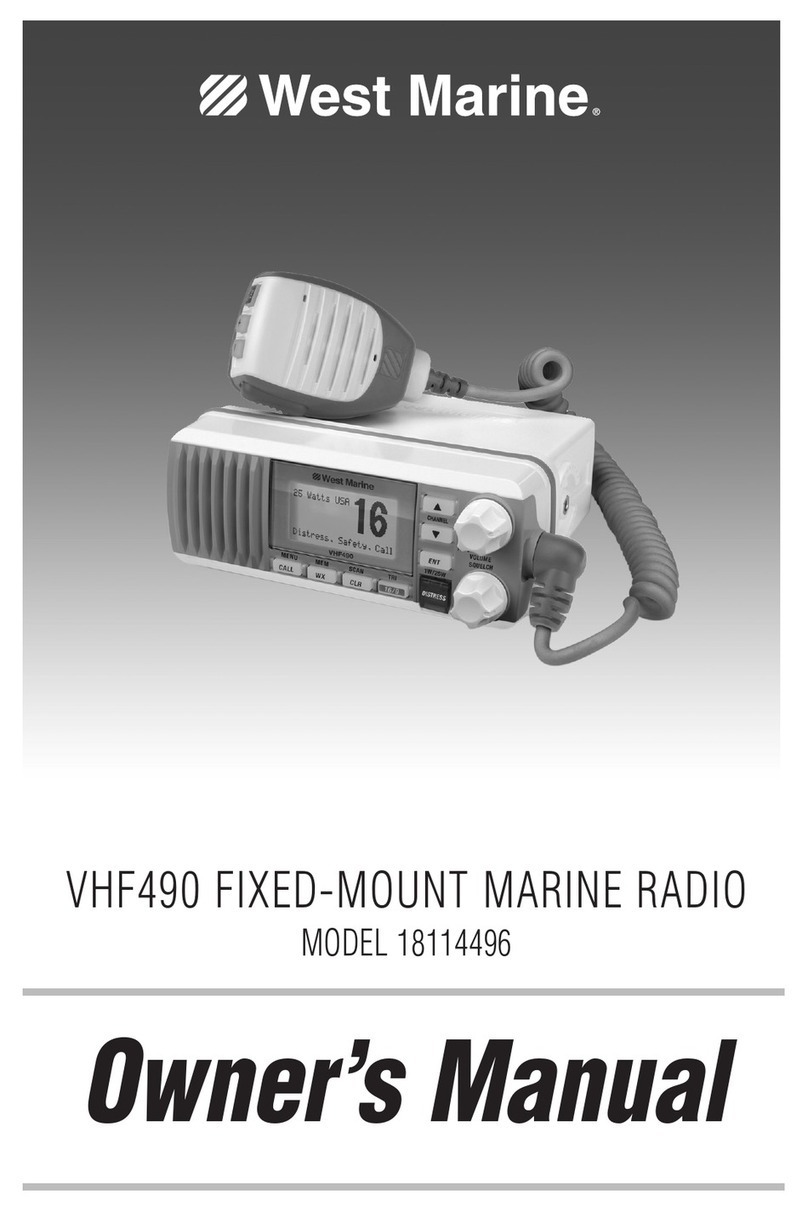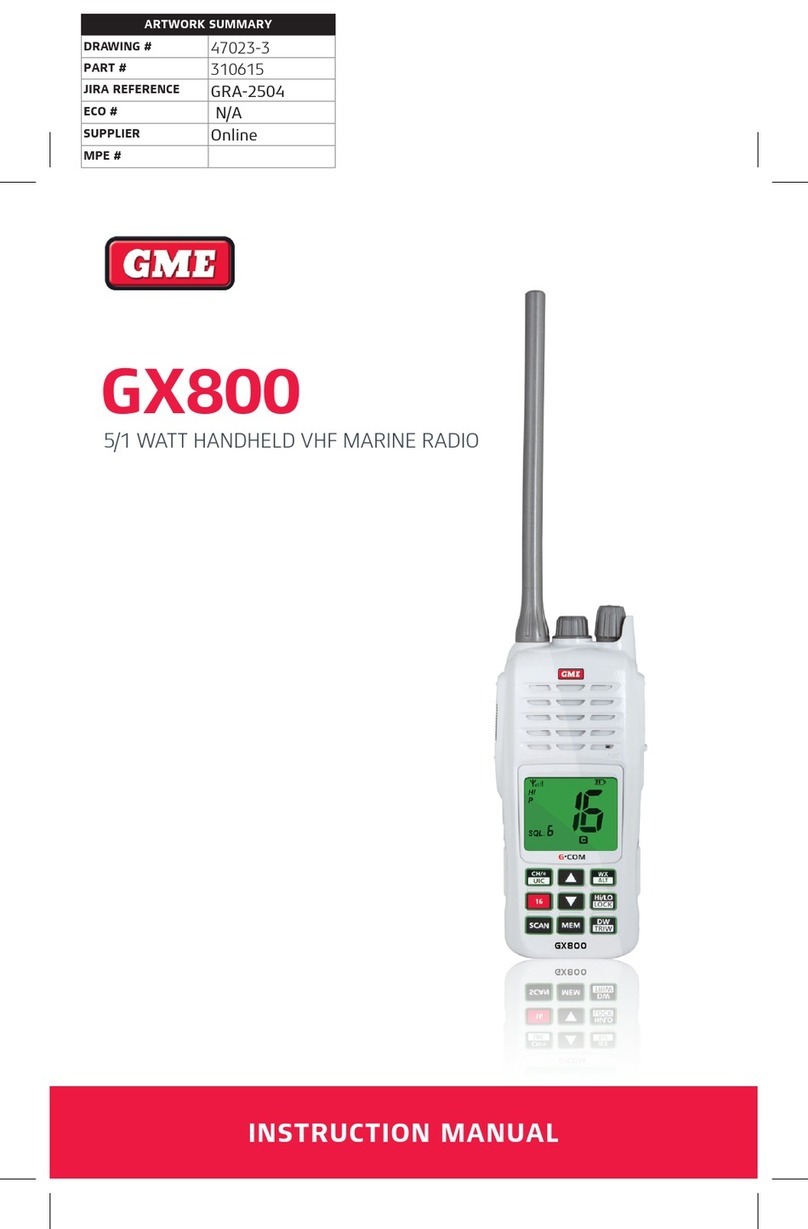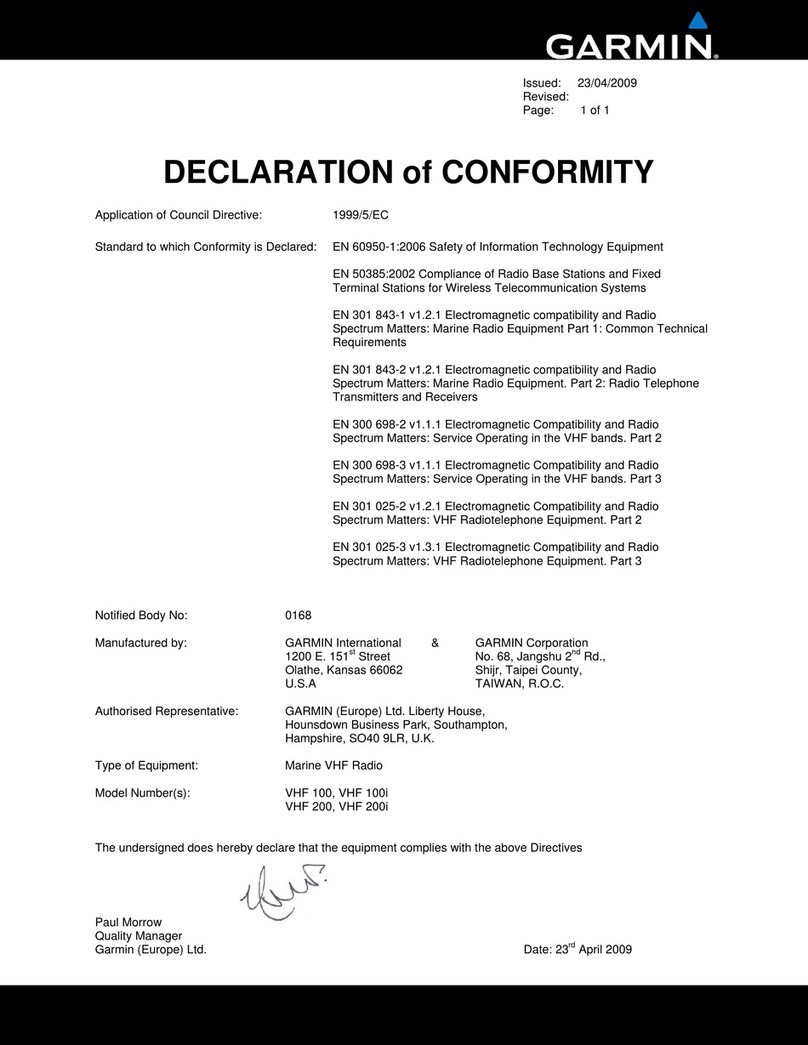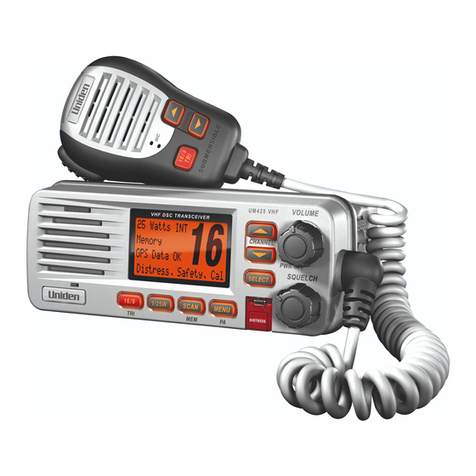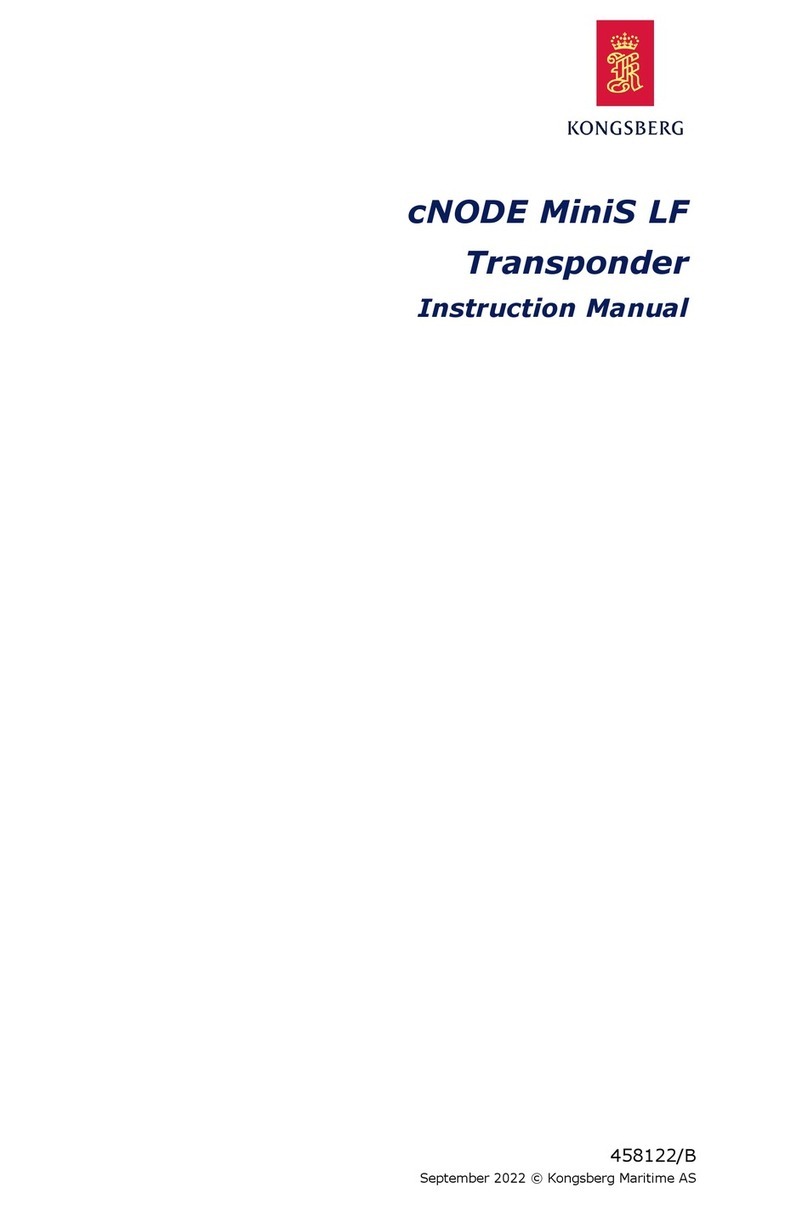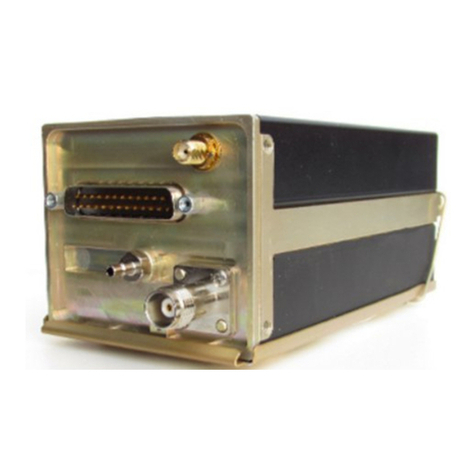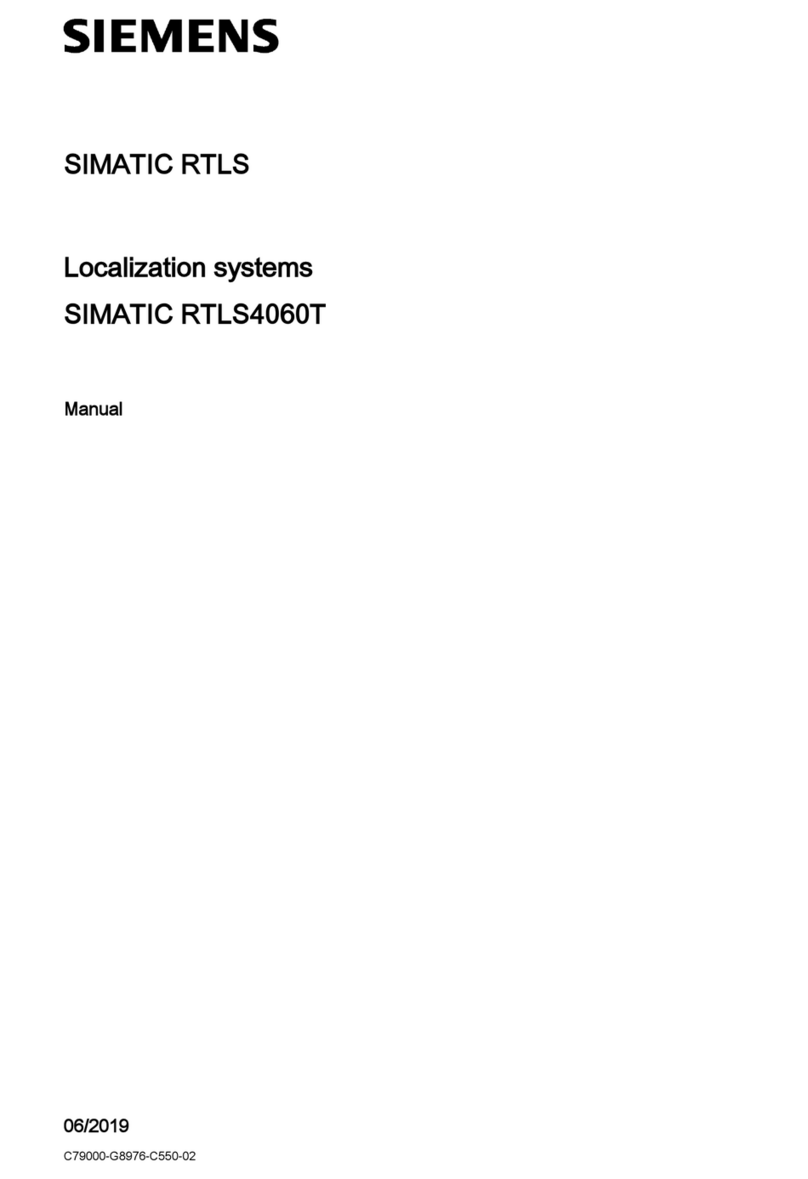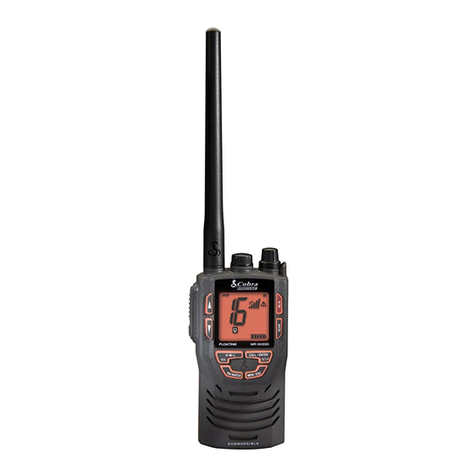Himunication HM130 User manual

Page Rev. 3
1
HM130 Instruction Manual
Utility Model Hand-held Marine Radio with China Exclusive Patent
Technology
RF Radiation Information
RF Radiation Profile
Your radio is designed and tested to comply with a number of national and international
standards and guidelines (listed below) regarding human exposure to radio frequency
electromagnetic energy. This radio complies with the IEEE and ICNIRP exposure limits for
occupational/controlled RF exposure environment at operating duty factors of up to 50%
transmitting and is authorized by the FCC for occupational use only. In terms of measuring RF
energy for compliance with the FCC exposure guidelines, your radio radiates measurable RF
energy only while it is transmitting (during talking in PTT mode), not when it is receiving
(listening) or in standby mode.
The device complies with SAR and/or RF field strength limits of RSS-102 requirement
RF Radiation Safety
In order to ensure user health, experts from relevant industries including science, engineering,
medicine and health work with international organizations to develop standards for safe
exposure to RF radiation. These standards consist of:
United States Federal Communications Commission, Code of Federal Regulations; 47CFR
part 2 sub-part J;
American National Standards Institute (ANSI)/Institute of Electrical and Electronic
Engineers (IEEE) C95. 1-1992;
Institute of Electrical and Electronic Engineers (IEEE) C95. 1 – 1999;
International Commission on Non-Ionizing Radiation Protection (ICNIRP) 1998;
FCC Regulations
Federal Communication Commission (FCC) requires that all radio communication products
should meet the requirements set forth in the above standards before they can be marketed in
the U.S, and the manufacturer shall post a RF label on the product to inform users of
operational instructions, so as to enhance their occupational health against exposure to RF
energy.
Part 15 Compliance
This equipment has been tested and found to comply with the limits for a Class B digital device,
pursuant to part 15 of the FCC Rules. These limits are designed to provide reasonable
protection against harmful interference in a residential installation. This equipment generates
uses and can radiate radio frequency energy and, if not installed and used in accordance with
the instructions, may cause harmful interference to radio communications. However, there is no

Page Rev. 3
2
guarantee that interference will not occur in a particular installation. If this equipment does
cause harmful interference to radio or television reception, which can be determined by turning
the equipment off and on, the user is encouraged to try to correct the interference by one or
more of the following measures:
●Reorient or relocate the receiving antenna.
●Increase the separation between the equipment and receiver.
●Connect the equipment into an outlet on a circuit different from that to which the receiver
is connected.
●Consult the dealer or an experienced radio/TV technician for help. Note:“Changes or
modifications to this unit not expressly approved by the party responsible for compliance
could void the user’s authority to operate the equipment.”
EU Regulatory Conformance
As certified by the qualified laboratory, the product is in compliance with the essential
requirements and other relevant provisions of the Directive 1999/5/EC. Please note that the
above information is applicable to EU countries only.
Waterproof Design Warning:
This product is the IP67 waterproof design, in order to achieve the best performance,
before the end-user use it, and please pay the highest attention for the following three
points:
1, To tight the antenna because there is an O-ring at the bottom of antenna side
2, To rotate tightly the round socket cap because there is an O-ring design around the
cap
3,Non-professionals can not disassemble the machine.

Page Rev. 3
3
TABLE OF CONTENT
HM130 KEYS LOCATION DESCRIPTION...................................................................................................4
A.KEY FUNCTION........................................................................................................................................... 5
A.1 Key Arrangement..................................................................................................................................5
A.2 LCD....................................................................................................................................................... 5
B. DIRECT KEY OPERATION........................................................................................................................ 6
B.1 Power ON/OFF (Hardware).................................................................................................................6
B.2 VOL/SQL KEY.....................................................................................................................................6
B.3 UP/DOWN............................................................................................................................................ 6
B.4 16/9 Channel......................................................................................................................................... 6
B.5 Hi/Lo/LOCK Key................................................................................................................................. 7
B.6 Private Channel.....................................................................................................................................7
B.7 WX Channel(Only available for USA,Canada)................................................................................. 7
B.8 UIC Band...............................................................................................................................................7
B.9 SCAN.....................................................................................................................................................7
B.10 MEM....................................................................................................................................................8
B.11 Watch................................................................................................................................................... 9
B.12 Back Light...........................................................................................................................................9
C.SPECIAL FUNCTION OPERATION...........................................................................................................9
C.1 TX time out........................................................................................................................................... 9
C.2 Power save Mode..................................................................................................................................9
C.3 TX Indicator........................................................................................................................................10
D. EUROPEAN KEY OPERATION...............................................................................................................10
D.1 Programming ATIS ID....................................................................................................................... 10
D.2 Special Function Keys.................................................................................................................... 11
Appendix A – Near Lightning Strike Test.......................................................................................................12
Appendix B – Channel List..............................................................................................................................13
International Marine VHF Channels and Frequencies.................................................................. 13
U.S. Marine VHF Channels and Frequencies......................................................................................... 14
Notes:.........................................................................................................................................................15
Canadian Marine VHF Channels and Frequencies.................................................................................16
European Private Channels and Frequencies.......................................................................................... 18

Page Rev. 3
4
HM130 KEYS LOCATION DESCRIPTION
PTT
CH/* /UIC
16/9
SCAN
MEM
Power Switch
DW/TRIW
VOL/SQL
HI/LOW/LOCK
UP
DOWN
UIC
Battery capacity
Current Channel
Squelch Level
Volume Level
Lock icon
DUALW/TRIW
Earphone
Mem icon

Page Rev. 3
5
A.KEY FUNCTION
Key
Short Press ( < 3 sec )
Long Press ( > 3 sec )
HI/Lo /Lock
TX Power Hi/Low
Key Lock
16/9
CH 16
CH09
DW/TRIW
Dual Watch mode
Tri Watch mode
Power Switch
On
Off
SCAN
All Scan/all memory Scan
Priority all/memory Scan
MEM
MEMORY Mode
Save/Delete Memory Channel
Up/Down
Channel/ Setting Up/Down
Channel Fast up/Fast down
CH/*/UIC
Private channel
Band Selection
VOL/SQL
SQL Set
A.1 Key Arrangement
PTT CH/*/UIC UP HI/LO/LOCK
16/9 DOWN DW/TRIW
SCAN MEM VOL/SQL
POWER SWITCH
A.2 LCD
Table of contents
Other Himunication Marine Radio manuals
